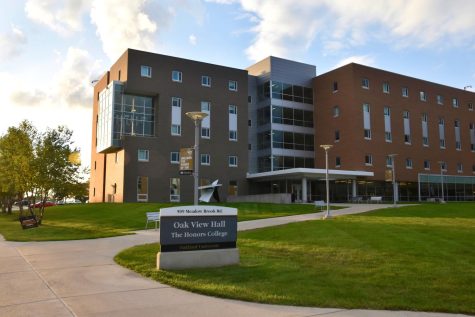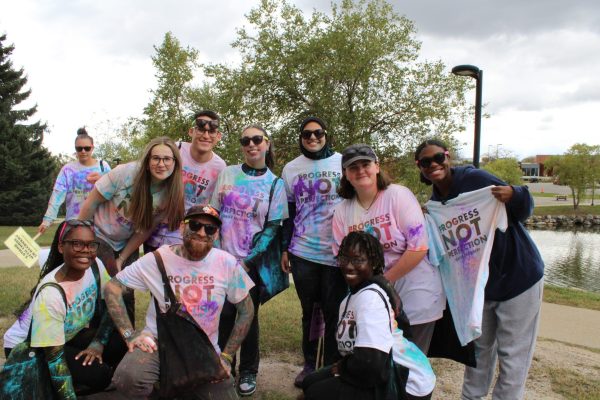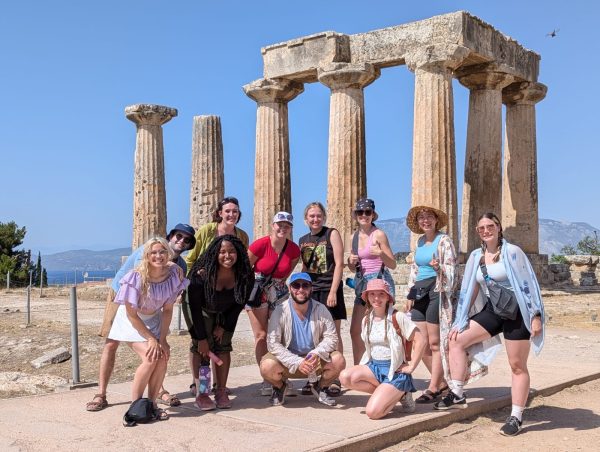Director of Oakland’s Eye Research Institute receives $1.5 million grant to study pure nuclear cataracts
An eerie silence fills the fourth floor of Dodge Hall. Microscopes and large pieces of equipment sit in the shadows, barely being lit by the dimmed hall light.
It’s as if the rooms are crying out, “Please use me!” No abandonment here. It’s just Sunday.
For one man, this weekend environment provides the perfect atmosphere to complete part of his work.
“It’s quiet here. I can usually write my papers,” Dr. Frank Giblin said.
Giblin has spent the past 40 years at Oakland University studying the windows to the soul: The human eyes.
This fall, Giblin, director of the Eye Research Institute at Oakland, received a four-year $1.5 million grant from the National Institute of Health that will focus on the study of pure nuclear cataracts.
Cataracts, the leading cause of blindness, are the loss of transparency within the lenses of your eyes, according to Giblin. He described the lenses as “beautifully transparent.” The lens and the cornea are the only transparent tissues in the human body.
There is no cure for cataracts, but Giblin’s work will look into why certain elements cause cataracts. One of these is simply in the air we breathe.
“When patients breathe 100 percent oxygen they will get a nuclear cataract,” Giblin said. “Because the center of the lens is very susceptible to oxygen.”
He uses this as a base for the experimentation he and his team do on guinea pigs. The animals were treated with hypobaric oxygen and had the same results.
Giblin described the chemistry behind the oxygen experimentation.
Within the lens there are proteins, which include amino acids, the homes to many different sulfhydryl (sulfate and hydrogen) groups. When these groups become oxidized, they bind together and create disulfide aggregations, the cause of the loss of sight.
He said, more specifically, these aggregations are “scattering the light” your eyes take in.
“In the grant that just got funded I proposed to identify which specific groups are becoming bound together,” Giblin said. “This has never been done before.”
Giblin’s work will expand outside of the university.
“A lot of science is collaboration,” he said.
Giblin will be working with a professor from Oregon Health Sciences University. Once a post-doctorate fellow is hired, they will fly the isolated proteins from the guinea pig lenses out to Oregon where it will be analyzed by special equipment.
There is a second aim Giblin will be researching as to why these aggregations form.
“There is no protein turnover in the lens, it’s a very unique tissue,” Giblin said. “Say you’re 20 years old, these proteins right in the center of your lens are actually older than 20 years, they were the proteins that were there when you were an embryo. It’s called the embryonic nucleus.”
As these proteins age, they begin to break and form peptides, according Giblin. The hypothesis is peptides bind with other crystallines and then other proteins bond with these catalyzed groups.
“They accelerate this aggregation process by forming these little peptides,” Giblin said.
He will be collaborating with a professor at Vanderbilt University to image these peptides, as well as with a professor from the University of Missouri.
In the years Giblin was at school, there were major strides in the field of biology and chemistry. This excited him and inspired him to change his career path.
Giblin was previously a chemical engineer who was involved in processes such as making pulp and paper. He received his doctorate in biochemistry from the State University of New York at Buffalo in 1974 and was then offered a post-doctorate position thanks to the research he did while completing his doctorate.
“At that time in the 1970s, people in Japan, hundreds and hundreds of people, were dying and they didn’t know why,” Giblin said. “It was due to methyl-mercury poisoning in fish. I was studying how methyl-mercury is transported in the body and how it can kill people.”
One of the tissues in the body that took up lots of mercury was the lens. He then contacted co-founder of the ERI Dr. Venkat Reddy, who was a lens expert, to discuss the lens for his thesis paper. Dr. Reddy later offered him the post doctorate position.
“Life is interesting, you never know what’s going to happen,” Giblin said.
The advances made in the science today still fascinate Giblin.
“We’re in the golden age of science. Nobody would have even thought, even 15 years ago, that we now can sequence the whole human genome,” he said.
Giblin noted that one base change out of three billion base pairs in the human DNA, can cause horrible diseases.
“Appreciate your good health. You’re lucky,” Giblin said. “We’re all lucky.”







